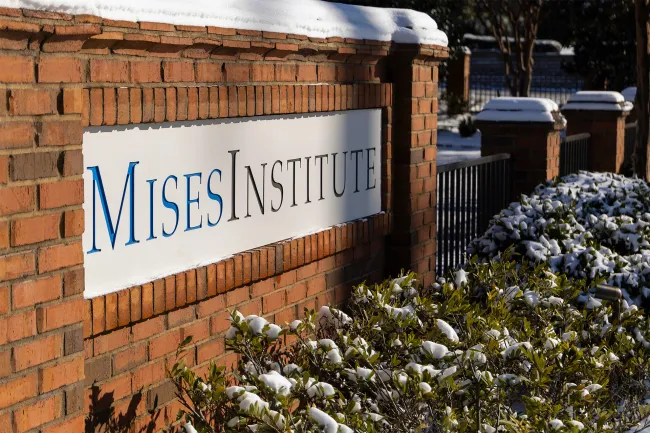The US government debt debate matters to everyone but especially to generations unborn and those worried about the near future. The $36 trillion or so of red ink—and that is the government’s self-assessed number that I believe is based on questionable accounting standards—should frighten everyone who has any wealth in dollars or who cares about his or her children. That’s because governments can and have gone broke, unleashing painful long-term inflation.
Given the current official numbers—interest, just interest, on the federal debt—is now the third biggest item in how the government spends our money. Let’s personalize it. Imagine you are on the hook for a mortgage from hell. It’s so big you can never get at the principal. It is more than a mortgage. It is a financial albatross that you and your scions can never escape. Your relatives and your friends—amazed by your spending negligence—would probably think you’re a financial illiterate, a spending addict who should be put under the supervision of a court.
History warns us that owing to a spending addiction or stupidity we are headed down a perilous path. That is, unless strong medicine is administered to the chronic spenders of both parties. It is they—who over the last three or generations or so—have been driving high speed down the road to bankruptcy. I exempt our grandparents who fought World War II. They started to reduce the red ink for a short period after the war before the welfare-warfare took hold and both parties gave up on any rational spending plans.
In previous generations, presidents as different as Lyndon Johnson and George W. Bush have gone on wild spending sprees with terrible results. The startup costs of Medicare in the 1960s and the federal government drug prescription of some 40 years ago shared a trait: They were far in excess of any estimated startup costs just as the War in Vietnam and Bush’s War on Terror promise to bring democracy to the world were both budget busters. Also, both Bush and LBJ left office hated. Outrageous spending caused by useless wars can do that.
President Richard Nixon’s biggest crime wasn’t really Watergate. It was unloosening monetary policy by replacing a Fed chairman who wouldn’t inflate with someone who would so Nixon could win re-election in 1972. After Nixon’s fall, the nation was in the midst of an incredibly painful period. It was called stagflation. This was about a decade-long period of low growth rates combined with high inflation rates. That’s something traditional economists had previously said couldn’t never happen. Yet, thanks to overspending, too many dollars chasing too few goods, it did. I remember it. (I was a stringer for a small newspaper in Sussex County, New Jersey, The Sussex Spectator. It closed. I was stiffed on my last few stories. The owner said high interest rates killed the paper).
But the government’s spending madness goes beyond politics. Some crackpot economists/pols now offer us the idea of Modern Monetary Theory (MMT). This is the idea that everyone can have every program he or she ever wanted; that all the government has to do is print more and more money. It is madness. It is a madness documented in history.
Indeed, government overspending has not only lowered standards of living but changed the course of history several times. The 17th-century Spanish empire—flush with tens of millions from New World gold—overspent and faced army mutinies because it was running out of money. The thrifty Dutch rebelled against the Spanish and, over a long period, won their independence.
Spain’s relatives, the once great, wealthy Habsburg empire, had their own problems. In the 19th century it went bankrupt several times. In the second half of the century, it competed with the rising Prussian state over which should unite Germany. In 1850, the Habsburgs humiliated Prussia at Olmutz. (It was once the industrial heart of the Hapsburg empire. Today it is part of the Czech Republic). It forced the Prussians to demobilize in a crisis over German unification.
But some 16 years later—after the faster-growing Prussia had re-armed, it easily defeated the financially-challenged Habsburgs in the Six Weeks War. The ramshackle Hapsburgs—whose armed forces had been starved—lost. The Prussians had superior firepower. Austrian officials had wanted to buy better weapons. They couldn’t. Why not? They were broke. About a half century later the entire empire, which had been forced to consolidate with the Hungarians, died in the ashes of WWI. Reckless spending, along with many other factors, destroyed the empire.
During and after WWI, the British empire ran huge debts. The responsibilities of supporting an empire around the world—with a burgeoning welfare-state at home—was crushing the British empire. At the end of World War II, Britain was one of “the winners” of the war. Britain was a strange winner.
Britain was broke. Britain had to borrow from the US; not that it solved its problems. Britain continued to spend big and was becoming the sick man of Europe by the 1970s. One British prime minister—noting the higher living standards produced in West Germany by lower taxes and better fiscal policies—joked, “We just think we won World War II.”
Yet Britain, Spain and Austria had once been wealthy countries. What happened? The same thing that’s happened to other countries and to celebrities who ran out of geld (money). They spent themselves into bankruptcy. Now the United States is headed down the road taken by Spain, the Habsburgs, and the British empire. Will someone hit the brakes?


